What do white green and pink cards mean in football and how do they work? Latest updates as Copa America announce they’ll introduce new laws at this summer’s tournament
Fans watching this summer’s Copa America could soon see the latest card in football being waved.
South American football’s governing body, CONMEBOL, has adopted a rule introducing a pink card ahead of the tournament in the United States.
A pink card will be part of a system where a team can receive an extra substitute during matches.
Referees will wave the card when notified of a team making a substitute due to a concussion or head injury.
The card confirms that both sides will have an additional substitute as part of the rule, after football lawmakers, the International Football Association Board (IFAB), approved permanent concussion substitutions in March.
Pink cards will be used at the Copa America after organizers approved a rule change
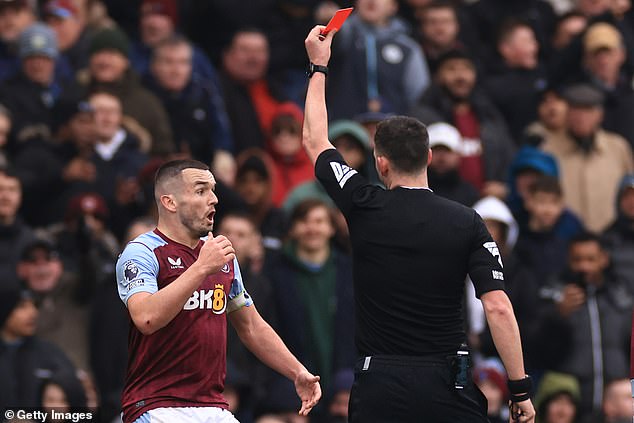
Fans are used to red and yellow cards, but several new cards have been introduced to the game
Pink cards are among the newest cards to appear in the game, with several new colors having been introduced in recent years.
Fans are used to red and yellow cards for fouls and offenses during a match, which were introduced more than 50 years ago during the 1970 World Cup.
Earlier this year, the IFAB planned to approve a controversial proposal to issue referees with blue cards to use in sin-bin trials.
Referees would have had the power to send players to the sin bin for dissent against referees and cynical fouls.
Players would have been warned that two fouls with a blue card, or a combination of yellow and blue, would amount to a red card and dismissal.
The plans were eventually shelved due to widespread backlash against their introduction, although sin bin processes have continued at grassroots level.
A white card had initially been proposed by former UEFA president Michel Platini, but it is used in Portugal for a different reason.
White cards have been used as part of an initiative in Portugal to recognize and encourage fair play and was intended to ‘improve the ethical value in sport’.
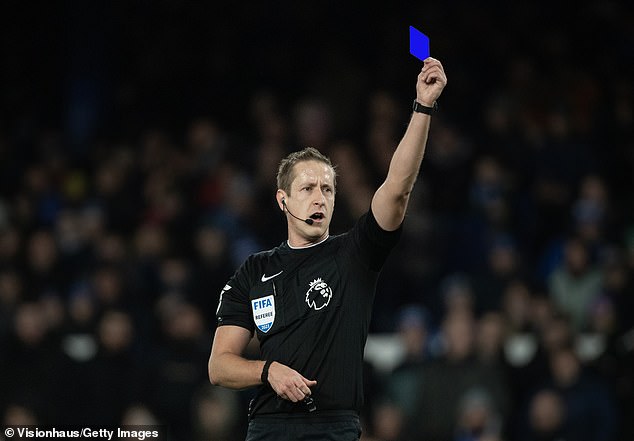
Blue cards would be introduced as part of sin bins until the proposal was shelved
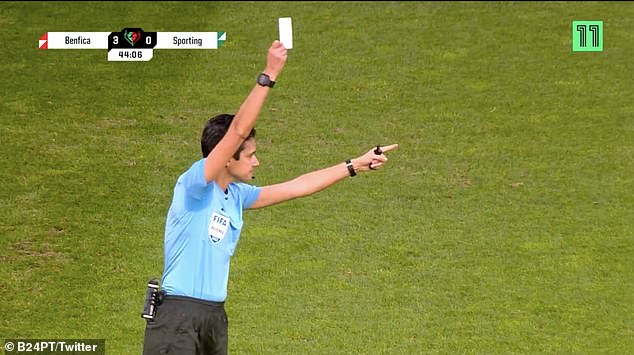
Last year, a white card was introduced in Portugal to reward acts of good sportsmanship

It came after someone in the dugout became ill, with medical staff from both teams helping them
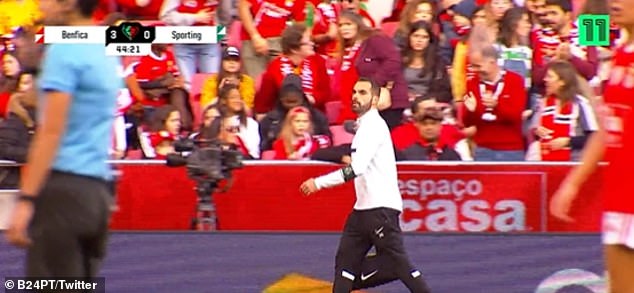
The referee waved it in recognition of their sportsmanship during the match
The aim was to encourage greater sportsmanship and provide immediate recognition of positive actions.
The first white card was shown by referee Catarina Campos during a Women’s Cup match between Sporting Lisbon and Benfica in January 2023.
After someone in the duo became ill, medical personnel from both sides quickly came to their aid. Campos showed the white card to those involved and was warmly received by the Estadio da Luz crowd.
It was then used again nine months later in a Portuguese men’s fifth division match. An attacker had a golden opportunity to score when a defender gave the ball away injured.
The attacker quickly realized his opponent was injured and kicked the ball out so it could be dealt with instead of scoring.
The sporting gesture was applauded by the fans present and the referee recognized the good sportsmanship with a white card.
A green card was introduced during the 2018 CONIFA World Cup – a competition for non-FIFA affiliated international teams – held in London.
The green card was introduced as a concept by tournament sponsors Paddy Power and when it was issued to a player for dissent or diving, the offender had to be replaced immediately.
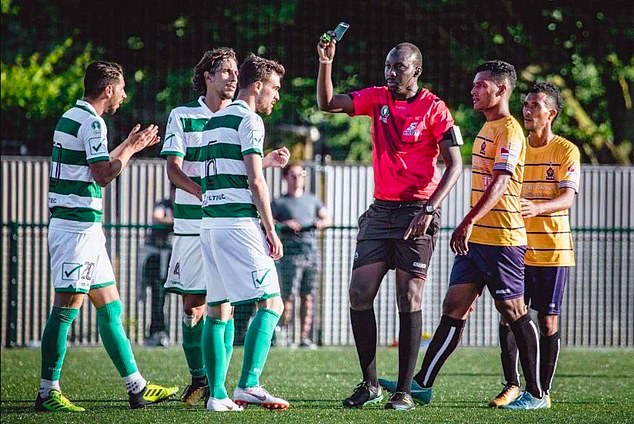
During the 2018 CONIFA World Cup in London, green cards were used for dissent or diving

According to the rules of the tournament, a player who received the green card had to be replaced
During the Group C match between Padania and Tuvalu at Coles Park, Haringey saw referee Raymond Mashamba hand out a green card twice within minutes.
The first was shown to a Tuvalu midfielder and the second to Stefano Baldan from Padania. However, the Tuvalu player stayed on because all his substitutions had already been used.
Italy’s Serie B launched a ‘symbolic’ green card during the 2015/2016 season as a positive measure in an effort to promote fair play.
Players could earn one by taking the ball out of play when someone was injured, assisting the referee or admitting to diving in the penalty area.
Italian football also previously used an orange card, which saw players removed from the match for a few minutes after a foul.
